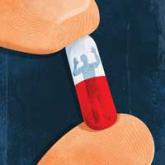Article

Reducing COVID-19 opioid deaths
- Author:
- Ashwin A. Patkar, MD
- John Beyer, MD
- Ramez Ghanbari, MD, PhD
- Richard Weisler, MD
Take steps to lessen the impact of the pandemic on patients with substance use disorders.
Audio

Opioid abuse and overdose
- Author:
- Ashwin A. Patkar, MD
- Richard H. Weisler, MD
Ashwin A. Patkar, MD, and Richard H. Weisler, MD, discuss the opioid epidemic.
Article

Opioid abuse and overdose: Keep your patients safe
- Author:
- Ashwin A. Patkar, MD
- Richard H. Weisler, MD
Opioid abuse and overdose are large and growing problems, and in recent years the numbers have been staggering. Overdose deaths related to opioids...
